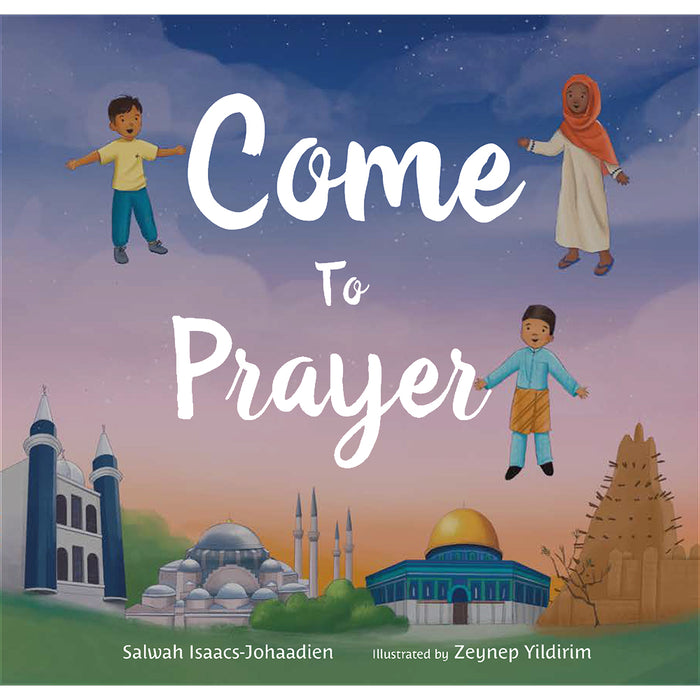What inspired you to write this story?
More than 20 years ago, long before I imagined that I could be a published author, I was watching a cricket match on TV in which the commentator mentioned that the weather that day was windy in Rawalpindi (Pakistan). I was amused by the rhyme in that statement and found myself contemplating the possibility of writing a rhyming book one day about weather around the world. The thought remained at the back of my mind over the years but I never did anything about it as there didn’t seem to be much essence to the initial idea.
Many years later when I joined a Muslimah writers’ course, I wanted to write a book for children about attaching their hearts to the masjid and the congregational prayer. I was inspired by community and family members who refused to miss their congregational prayers despite challenging conditions which included flooding in the neighbourhood during winter or heat and smoke due to the surrounding mountains burning during summer. I was convinced that in every neighbourhood where there is a mosque, in every city, in every country, there are people who uphold their congregational prayers diligently despite trying conditions and I wanted to honour these people as well as inspire others to be like them.
The common challenge of weather, the conditions being different in different countries, seemed to be a perfect common thread in the context of world cities. It was such an exciting moment for me when I realised that I could tie my longstanding weather rhyme idea into a book about being consistent with the congregational prayer and the book took off from there, Alhamdulillah. Unfortunately, windy Rawalpindi didn’t make it into the book, as more intriguing examples of cities and their weather conditions cropped up as I researched countries around the world.
What’s your favourite moment in the book and why?
I’ll be a bit vague about my favourite part as I don’t want to spoil the surprise at the end of the book. After the spread about the Isha prayer, something happens that demonstrates the unifying nature of salaah and worship in Islam, connecting Muslims on a global scale. I love the entire book, but the ending tops it off in the perfect way. You’ll have to read the book to find out what it is!
What are some important messages or conversational points your book inspires?
- The importance of upholding the five daily prayers in congregation as mentioned in a number of Hadith.
- Salaah & Islamic worship as a globally unifying phenomenon – regardless of cultural and environmental differences.
- Striving to uphold good practices and persevering in doing so.
- Love for and attachment to the masjid, the house of Allah.
- Leaving off worldly pursuits and overcoming obstacles to answer the call to prayer.
- Why does coming to the prayer equate to coming to success?
- Families striving together in pursuit of good deeds.
- The masjid as a place for families.
- Mosque architecture styles around the world.
- Mosques around the world can vary vastly in size and form but worshippers go there for the same purpose.
- Diversity of Muslim populations around the world.
- Different climatic/weather conditions around the world.
What’s unique about this story?
Come to Prayer is a creative non-fiction, all-in-one journey through culture, weather, geography, religion and even architecture as a day in the life of Muslims from five different cities on five different continents, centred on the five daily prayers is highlighted. Different layers of information are woven together in a simple, rhyming format to inspire, entertain and educate young ones about the importance of salaah as well as other issues of discussion as listed above. Even though the text is simple and child-friendly, it contains a wealth of (researched) information that could lead to hours of beneficial discussion.
While I was researching mosques and Muslim communities around the world, I was personally intrigued by the fact that Muslim communities and their places of worship existed in places where I, in my childhood, would not have expected to find Muslims living, such as Iceland and Brazil. I hope that this book inspires others to do their own research and find out more about Muslims as well as mosques across the globe and what makes us all part of a single ummah.
If you had to describe it in one sentence, what would it be?
No matter where in the world, no matter what the weather, when the time for prayer sets in, the devout leave their homes to pray together at the masjid.
Why did you choose these specific locations in the story?
The book features the people and cities of six different countries on five different continents. I did this deliberately in an attempt to represent the Muslims of the whole world as well as locate the prayer throughout the world.
After a painstaking exercise of listing all the countries in the world as well as their major cities, then picking out cities with names that not only rhymed with different weather conditions, but also contained an actual mosque, I eventually settled on what I considered the five best places for the vision of the book.
I also deliberately chose cities with unique and interesting sounding names for the purposes of entertaining children who never heard these names before as well as hold their fascination and intrigue.
















